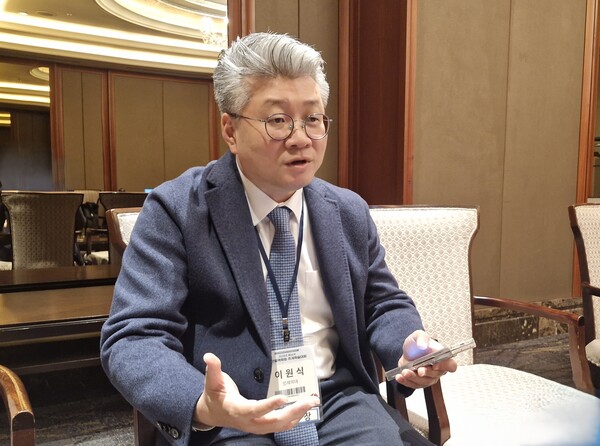Acute lymphoblastic leukemia (ALL) is a blood cancer that can affect both children and adults. It causes abnormal proliferation of lymphoid progenitor cells in the blood and bone marrow, leading to abnormalities in the blood—which delivers oxygen and nutrients throughout the body—and in lymphocytes, which are crucial for the immune system.
However, despite being the same type of blood cancer, ALL in children and adults differs significantly. Most notably, the prognosis for adults with ALL is much worse than for children. The five-year survival rate for children is 80 to 90 percent, but for adults it is only 30 to 40 percent. And while ALL is more common in children, Korea’s low birth rate and aging population have led to fewer pediatric cases and more adult cases.
Korea Biomedical Review spoke with Professor Lee Won-sik of the Department of Hematology and Oncology at Inje University Busan Paik Hospital about the poor prognosis and current reality of diagnosing and treating adult ALL, which is rising in Korea.

Q: Acute lymphoblastic leukemia occurs across all age groups. Why do adults have poorer outcomes?
A: Although both are called ALL, pediatric ALL and adult ALL are essentially different diseases. Adults have a much higher frequency of genetic mutations, including complex abnormalities. The Philadelphia chromosome is a representative example. Also, children can tolerate high-dose anticancer drugs, but older adults cannot, so chemotherapy intensity must be reduced, decreasing its effectiveness.
For these reasons, the proportion of adult patients who achieve complete remission is much lower. Adult patients rarely achieve remission through chemotherapy alone, so most require stem cell transplantation. This is why the five-year survival is dramatically lower in adults. While a virus related to the AIDS virus can cause adult ALL, this is extremely rare in Korea. In reality, adult ALL develops due to acquired genetic mutations.
Q: What symptoms bring adult ALL patients to the hospital?
A: Fever is the most common symptom because immunity declines and infections occur. Bruising from low platelet counts or dizziness from anemia is also common. Some patients come with uncontrolled nosebleeds, severe anemia, or even collapse. Others are diagnosed incidentally during health screenings despite having no symptoms.
Q: How can adults receive timely treatment?
A: There is no single symptom that definitively indicates ALL. If health concerns persist for 2–3 weeks, adults should get a blood test. Basic blood tests can detect many illnesses and often detect ALL early.
Q: What tests diagnose ALL?
A: Diagnosis requires a bone marrow biopsy, chromosome analysis, and molecular genetic tests. PCR and NGS are both used—PCR identifies key mutations quickly, while NGS detects a broader range but takes about a month.
Q: What factors determine prognosis?
A: Age, leukemia cell count at diagnosis, and minimal residual disease (MRD) status are key. MRD can detect one cancer cell among one million, making it an essential tool for guiding treatment. Highly complex genetic abnormalities—such as 10 or more high-risk mutations—predict poor outcomes.
The Philadelphia chromosome used to be a poor prognostic factor, but targeted therapies have narrowed the gap. T-cell ALL generally has a worse prognosis because fewer targeted therapies exist.

Q: Is treatment for adult ALL risk-adapted?
A: The only factor that changes first-line treatment is the Philadelphia chromosome. All patients receive chemotherapy; Philadelphia-positive patients also receive targeted therapy. If they respond, they proceed to stem cell transplantation. Those ineligible require two to three years of chemotherapy.
First-line treatment induces remission in around 80 percent of adults, but relapse rates remain high. Immunotherapies have improved outcomes significantly, but insurance coverage limits their earlier use, where they work best.
Q: What are the biggest unmet needs?
A: Using the most effective drugs first. Ponatinib, a third-generation TKI, is highly effective, but insurance only covers it in third or fourth line, and only as monotherapy.
To improve survival, we must strengthen first-line therapy, but reimbursement rules prevent it.
Young adults beyond age 25 also need CAR-T access, but insurance only covers ages 2 to 25.
Additionally, while MRD testing is performed, treatment is not yet tailored based on results.
Q: How common is relapse, and what options exist?
A: More than half of adult patients relapse. Maintenance therapy with TKIs can help, but only first-generation Glivec is reimbursed, for just 12 months. More effective options like ponatinib are not covered, creating major limitations.
Q: What emergencies should patients watch for?
A: Fever above 38°C (100.4°F), sudden bleeding (nosebleeds, black stools, severe bruising), or shortness of breath from anemia are emergencies. Without rapid treatment, patients risk sepsis or internal bleeding, including fatal brain hemorrhage.
Q: What final message do you have for patients and families?
A: Because ALL has a long course and frequent relapses, patients often struggle emotionally. Family support is vital. I hope patients can continue treatment with hope, knowing that outcomes are improving.
Related articles
- Curocell secures approval to begin phase 2 CAR-T therapy trial for adult ALL in Korea
- MRD-based treatment boosts pediatric ALL survival from 19% to 90%: study
- 60% of acute leukemia patients say life is harder after stem cell transplant: survey
- [Reporter’s Notebook] The new drug is here, but not for everyone: Korea’s tight grip on innovation access

